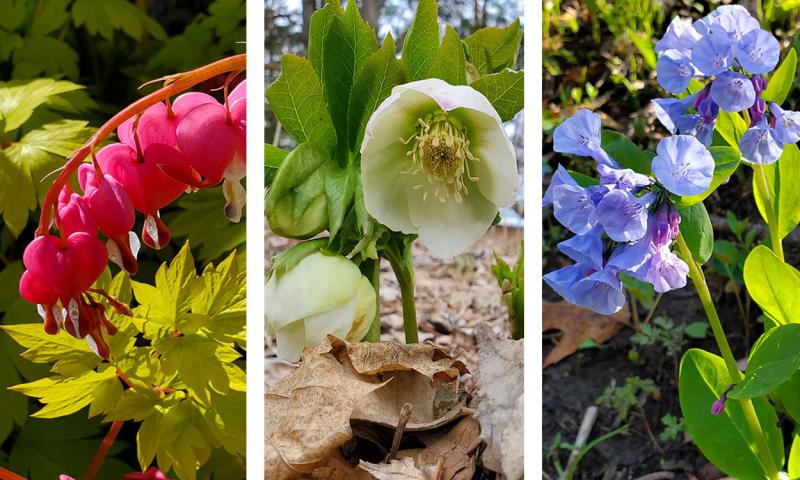
Written by Cindy Schnabel, South Dakota State University (SDSU) Extension Horticulture Assistant and Master Gardener, and Kristine Lang, SDSU Assistant Professor and Consumer Horticulture Extension Specialist.
Selecting beautiful perennial plants for a shaded location does not need to be challenging or leave you with boring options. In addition to the fan-favorite hosta, there are many shade-loving perennials that are known for their fun foliage or attractive blooms.
These plants will typically thrive along the east or north sides of buildings, and as understory plants integrated with larger light-blocking trees and shrubs.
Site Selection
One of the first things a gardener needs to do when working with a shady area is determine the average amount of light that the location receives each day. Notice if the area has morning light, which will be less-intense than afternoon, full-sun conditions. While the number of recommended hours varies slightly from different sources, below are the general classifications of light levels that correspond to perennial plant growing preferences.
- Part Sun: Four to six hours of direct sunlight per day.
- Part Shade: Two to four hours of direct sunlight per day.
- Shade: Less than two hours of direct sunlight per day.
- Dappled Shade: Light filtered through a tree canopy, fence or other shade structure.
Plant Care
Shade gardens are normally cool, moist locations compared to full-sun locations. Many plants that are recommended for shade gardens are cultivated versions of wild woodland plants. In general, shade-loving plants do best when they receive an inch of rainfall or supplemental irrigation per week. If the garden area has a fast-draining soil and stays especially dry, mulching will help maintain moisture in the soil and help keep weeds at bay. Shaded environments can foster more slug and snail problems, so be on the lookout for these common garden pests that like to leave large holes when munching on plant leaves. As with many garden plants, some shade-loving perennials can tolerate minor flooding events, and others thrive in dry soils; always pay attention to your specific garden conditions.
Recommended Shade Perennials for South Dakota
Below you will find a list of perennial plants that can be used in shaded gardens. Many South Dakota gardens are in the USDA Hardiness Zone 4, so that should serve as a baseline for selecting perennial plants that will overwinter well in the garden. However, soil conditions, wind exposure, irrigation, fertility and many other factors also play a role in perennial plant success. The plants recommended below have typically proven to do well in many South Dakota gardens. For even more shade garden ideas, please visit the SDSU Extension website for a list of shade-loving perennial ground covers.

Bleeding Heart
(Dicentra spectabilis)
This plant is known for its unique, heart-shaped flower. The flowers can be pink, white or nearly red. Bleeding Heart blooms in the late spring, and the foliage will then yellow and die back to the ground when the heat of summer arrives, allowing other plants to fill the void in the garden. Bleeding Heart do best in part to full-shade locations and perform well in soils with high organic matter.
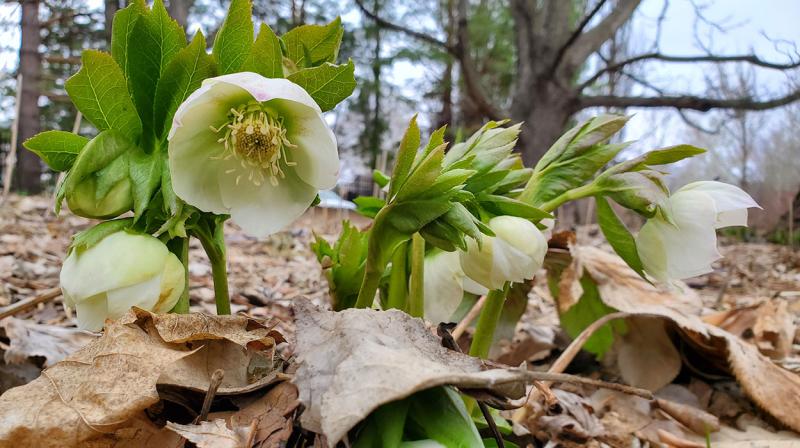
Hellebores or Lenten Roses
(Helleborus sp.)
Hellebores are one of the earliest blooming plants in South Dakota gardens. The flowers are fragrant, come in a variety of colors from white to black and are incredibly long-lasting. This evergreen perennial is disliked by deer and other pests due to its thick, leathery leaves. Locate Hellebores in an area that is well-drained with filtered sun. They will go dormant during hot, dry summer months.
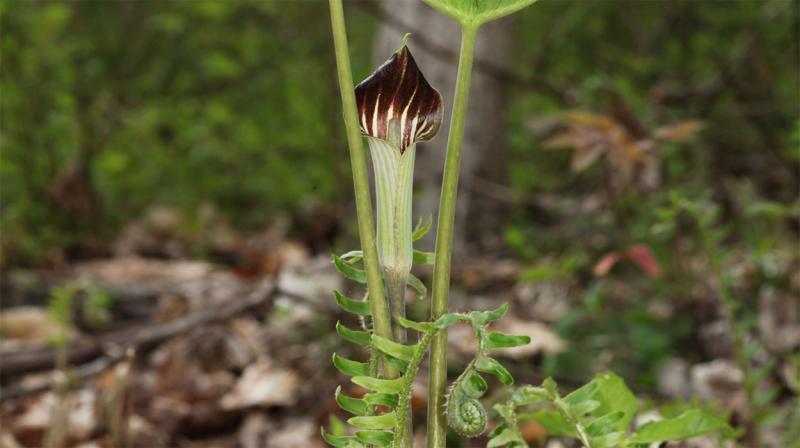
Jack-in-the-Pulpit
(Arisaema tripyllum)
Jack-in-the-Pulpit is known for its unique green and brown, striped, hood-shaped bloom that gives way to a cluster of red berries in late summer. Birds and mammals are attracted to eating the berries. It requires little care, likes rich soil and shade. This is a plant that you may stumble upon when hiking during early summer months in eastern South Dakota woodlands.
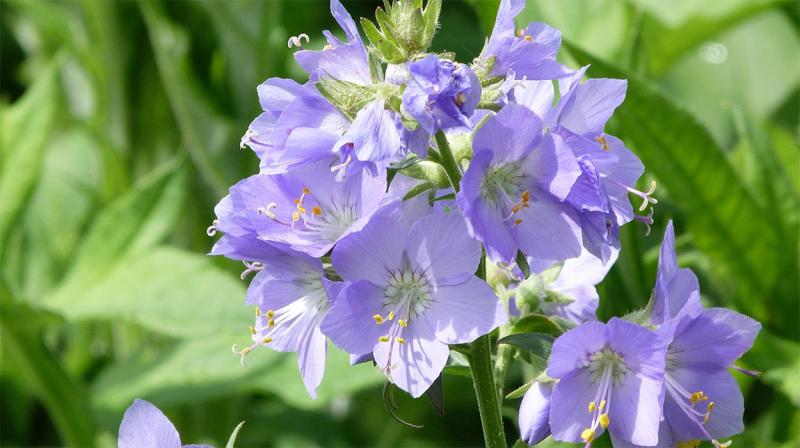
Jacob’s Ladder
(Polemonium reptans)
The best feature of Jacob’s Ladder is the foliage, with leaflets arranged like a ladder down each stem. This plant does well in dappled shade. Jacob’s Ladder can grow one to three-feet tall and spreads to two feet. Loose clusters of flowers hang like bells from long stems. Depending on the cultivar, the color of the blooms can be white, pink, blue or yellow. It likes moist, but not soggy soil and part to full shade.
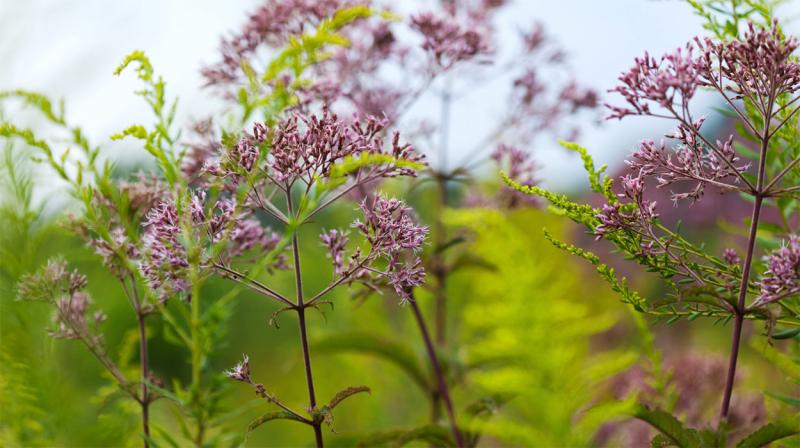
Joe Pye Weed
(Eutrochium purpureum)
Joe Pye Weed is a good option if you have a lot of space in your shade garden, as the spread can by up to five feet wide and it can reach up to seven feet tall. It has thick stems with lance-shaped, serrated dark green leaves that can be a foot long. Tiny mauve or pink-purple flowers bloom in large clusters atop the stem midsummer. Joe Pye Weed has a sweet vanilla scent that attracts butterflies and other pollinators. Use as a focal point or background plant. A location with moist soil with part shade is ideal for Joe Pye Weed; this plant can even withstand periods of flooded soils.
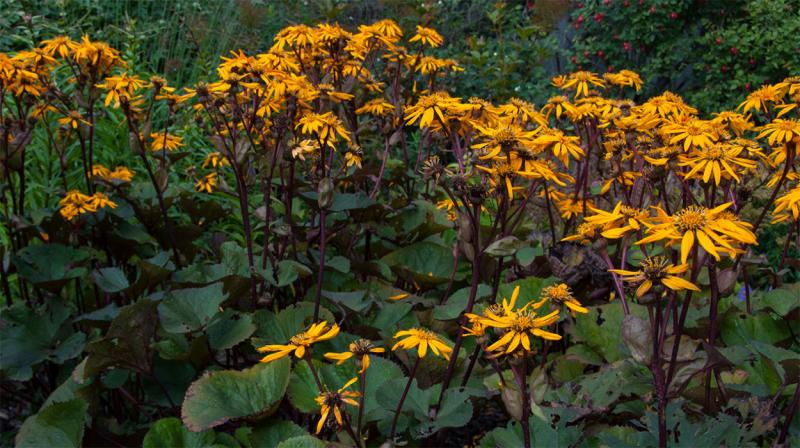
Bigleaf Ligularia
(Ligularia dentata)
Bigleaf Ligularia is known for its foliage more than its flowers. The deep green foliage with a purple underside. The large leaves are kidney-shaped with deep-green coloring that reveals purple pigments on the underside of the leaf. The yellow blooms are daisy-like, held on short stalks above the leaves. Bigleaf Ligularia is more-compact than Narrow-spike Ligularia, with width and spread of approximately three feet. It likes part to full shade and moist, rich soil. It is not uncommon for Ligularia to wilt in the heat of the day, but the leaves should recover under cooler evening conditions and with appropriate watering.

Narrow-spiked Ligularia
(Ligularia stenocephala)
Narrow-spiked Ligularia make an excellent focal point in a shade garden. The large, coarsely toothed leaves offset beautiful flowers that appear in June and July. Flowers are large yellow spiked blooms that look like corndogs. Each plant can spread two to four feet wide and reach heights up to five feet. Narrow-spiked Ligularia has similar shade, soil and moisture preferences as Bigleaf, and it too is prone to wilting and poor performance under extended periods of high temperatures.
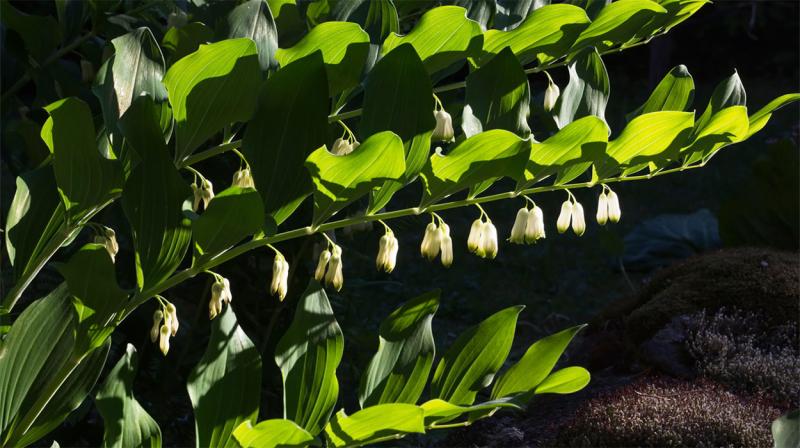
Solomon’s Seal
(Polygonatum odoratum)
Solomon’s Seal has tall, elegant, arching stems that small, white bell-like flowers hang daintily from. Later in the summer, dark-blue berries replace the flowers. It has lance-shaped leaves, with variegated cultivars most widely sold in garden centers. Once established, Solomon’s Seal can create a blanket of foliage that will turn golden yellow in autumn. The height is one to two feet and typical spread is three to four feet. Moist, well-drained soil that has part-shade is the ideal location.

Virginia Bluebells
(Mertensia virginica)
Virginia Bluebells are a gorgeous wildflower that can make an excellent perennial border in the home garden. From mid-spring into early summer, blue bell-shaped flowers hang down in clusters from multiple flower stalks per plant. The fragrance is light and sweet and attracts bees and hummingbirds. The leaves are smooth, blue green. Viginia Bluebells thrive in part-shade areas of the garden and prefer soils that are high in organic matter. While well-drained soils are preferred, this plant can tolerate occasional flooding.
This is just a sample of the unique perennials that will do well in South Dakota shade gardens. When included in the landscape, they will provide texture, color, fragrance and interest to spice up a bland location. When multiple shade perennials are used in the garden, you can be assured that there will be excitement in the garden from spring until fall.
References and Resources
- Armitage, A. 2020. Herbaceous Perennial Plants: A Treatise on their Identification, Culture, and Garden Attributes. (4th Ed.) Stipes Publishing. Champaign, IL, USA.
- Edwards, L. and K. Lang. 2021. Plant Hardiness Zones.
- Hubbard, P. 2018. Planting in Sun or Shade.
- Lang, K. and C. Schnabel. 2022. Hosta: A Shade-loving perennial.
- Lang, K. and D. Graper. 2022. Perennial Ground Covers for Shady Gardens.


